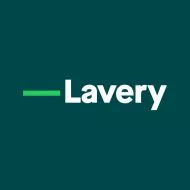With the collaboration of Martin Bédard, articling student
Individual shareholders who wish to withdraw funds from a
corporation can face some tax challenges that are sometimes
difficult to overcome. Nevertheless, there are various ways of
achieving this objective that limit or eliminate the negative tax
consequences to the shareholder and the corporation, provided
certain conditions are complied with. The transfer of a life
insurance policy by an individual shareholder to a corporation
where the two are in a non-arm's length relationship is often
an effective way of accomplishing this.
The technique is simple. The individual transfers his policy to
his corporation and receives a consideration equal to the fair
market value of the policy, as determined by an actuary. The
consideration paid by the corporation may be in the form of money
or a promissory note that will be paid when the corporation has the
necessary cash available. By operation of the ITA, the proceeds of
disposition are deemed to be equal to the cash surrender value of
the policy transferred at the time of the
disposition.1
The shareholder is then taxed on the difference between the cash
surrender value of the policy and its adjusted cost base, and the
resulting gain, if any, is considered to be income from property
and not a capital gain.2 Assuming that the cash
surrender value of the policy is low and that its fair market value
is high, the shareholder will benefit from a significant
disbursement of funds with little or no negative tax impact.
The fair market value of a policy will be higher than its cash
surrender value, for instance, where the insured's health
condition has deteriorated since he or she took out the policy.
This will also be the case where the theoretical premium for a
comparable policy would be higher than that paid for the policy in
question for financial reasons attributable to the type of policy
purchased or to changes in pricing.
As for the corporation, it ends up making a non-deductible outlay
of funds and acquiring an interest in an insurance policy with an
adjusted cost base equal to its cash surrender value. Thus, upon
the death of the shareholder, in addition to receiving the
insurance proceeds, the corporation will also benefit from an
increase in its capital dividend account equal to the indemnity
received, less the adjusted cost base of the
policy.3
The Canada Revenue Agency acknowledges the validity of this type
of planning, but seems to be uncomfortable with the
result.4 It has submitted this issue to the Department
of Finance which has indicated that it is studying the issue.
However, no amendment has been made to the statute to date, more
than 10 years after the issue was raised for the first time in
2002.
In addition, there are certain advantages to the corporation
holding the insurance policy and paying the premiums, particularly
the fact that the after-tax cost of the premiums is often lower to
the corporation than it would be to the shareholder.
The foregoing analysis is obviously general in nature and a more
detailed assessment is advisable for any individual who is in a
position to transfer a personally owned policy to a
corporation.
1 Subsection 148(7) of the Income Tax Act ("ITA").
2 Subsection 148(1) and paragraph 56(1)(j) ITA.
3 Subsection 89(1) "capital dividend account" d) ITA.
4 CRA, Technical Interpretation 2002-0127455, "Non arm's length disposition" (May 7, 2002); CRA, Technical Interpretation 2003-0040145, "Transfert d'une police d'assurance-vie" (October 6, 2003); ARC, Technical Interpretation 2008-0303971E5, "Transfer of a life insurance policy" (May 27, 2009).
The content of this article is intended to provide a general guide to the subject matter. Specialist advice should be sought about your specific circumstances.


